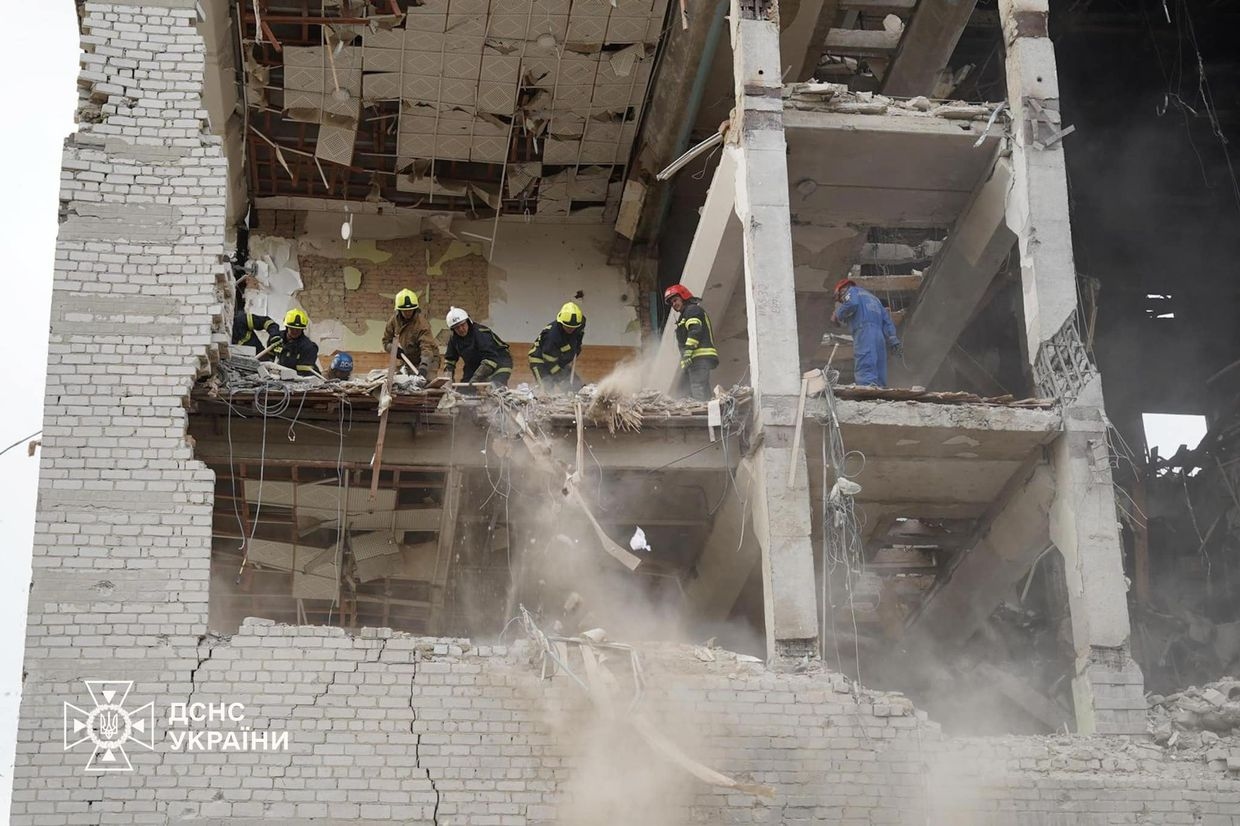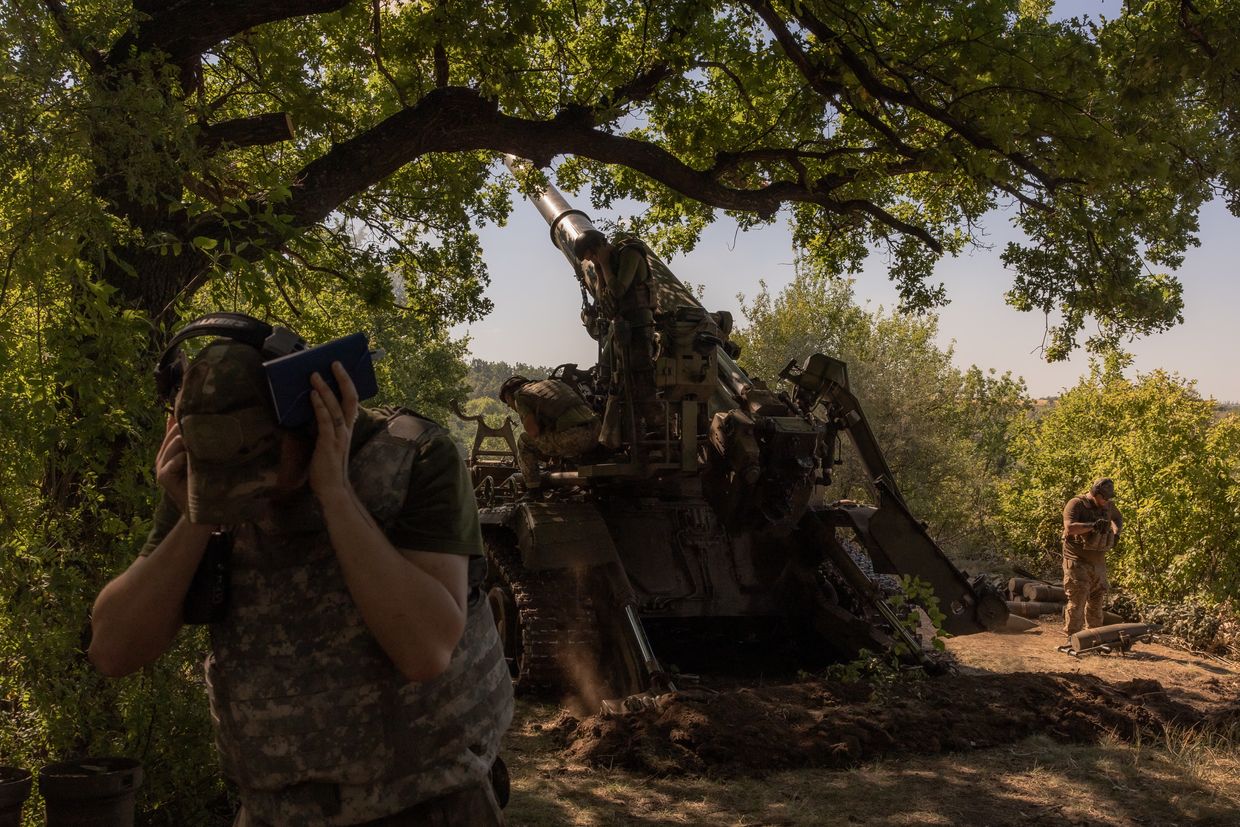What Iran's ballistic missiles, in Russia's hands, could mean for Ukraine

Iran has delivered ballistic missiles to Russia, the Wall Street Journal reported on Sept. 6, a move the U.S. has described as a "dramatic escalation" in Tehran's support for Moscow's full-scale war against Ukraine.
The White House said it was "alarmed" by reports of the transfer, but what the news actually means and the implications for Ukraine aren't exactly clear just yet.
Reports of Iran supplying ballistic missiles to Russia have been circulating for a while and haven't always agreed on some important points.
As far back as October 2022, the Washington Post (WP) reported Iran was preparing a first shipment of Fateh-110 and Zolfaghar short-range ballistic missiles.

In February of this year, Reuters reported Russia had already received "at least four shipments of missiles" from Iran.
And then earlier this week, Bloomberg reported that Iran would only begin shipping the weapons "in a matter of days."
To date, no Iranian ballistic missiles are known to have been fired at Ukraine by Russia, though its cities have been under attack from Iranian-made Shahed kamikaze drones since October 2022.
Adding to the confusion, more recent reports have mentioned the possibility of Iran shipping two types of close-range missiles, the Ababil and the Fath-360, with Russian personnel allegedly already training in their use in Iran.
"There are still lots of open questions," Fabian Hinz, a research fellow for defense and military analysis at the International Institute for Strategic Studies, told the Kyiv Independent.
"But the big question is what type of system (would Iran supply) — would they be more strategic or more tactical?" The answer to this question has profound implications for Ukraine. Tactical systems would potentially pose more of a threat for Ukraine's Armed Forces.
The Ababil and the Fath-360 have ranges of 86 kilometers and 120 kilometers respectively, which limits the targets Russia could use them against to those relatively close to its borders and the front lines.
"It's more likely they'd be used on targets related to action on the front line, military targets, logistics centers, command posts, barracks, fuel depots – these are the kind of targets you'd strike with a tactical missile," Hinz said.
The Fateh-110 and Zolfaghar short-range ballistic missiles have ranges of 300km and 700km respectively, and are classed as strategic.
If Iran is supplying these to Russia, it could "basically hit the depth of Ukraine," Hinz said.
"The range of the Zolfaghar is actually slightly more than the Russian Iskander," he adds.
"So you could use these to target critical infrastructure all over the country."
The range and devastation caused by ballistic missiles with this range has been grimly illustrated just this week – it is believed Russian Iskanders were used in the attack on Poltava on Sept. 3 which killed at least 55 people.

And it's worth noting that even the shortest-range Iranian ballistic missile could reach cities such as Kharkiv, located just 30 kilometers from the Russian border.
Regardless of the type that is supplied, Finz points out that due to Iran's extensive missile program, they are capable of "delivering in quantity."
"They have significantly increased their capabilities in recent years and they can just deliver the numbers the Russians want," he adds.
While Russia is not expected to run out of its own ballistic missiles anytime soon, in a war which has dragged on far longer than the Kremlin ever envisaged, Finz said it makes sense for the Kremlin to obtain as many as it can from wherever it can.
And more ballistic missiles will only place more stress on Ukraine's already stretched air defenses, as they're far more difficult to intercept than cruise missiles.
Ballistic missiles are rocket-powered and are launched high into the atmosphere before arcing back down onto their target.
They're only guided during the initial stages of launch, so they can be less accurate than cruise missiles, but have the advantage of reaching incredibly high speeds – sometimes more than 3,200 kilometers per hour – as they approach their targets.
Due to their high speed, only the most advanced air defense systems are capable of shooting them down, the U.S.-made Patriot system being one of them.
Ukraine has at least four Patriots, while President Volodymyr Zelensky said it needs 25 to protect the skies over the entire country.
"These more strategic weapons would basically suck up interceptor missiles, and when it comes to defending against ballistic missiles, you can only use certain systems," Finz said.
"Ukraine has the Patriot air defense system, but the numbers of interceptors are limited so that could potentially be a challenge if you have large numbers of Iranian missiles."
This is a very expensive challenge – one Patriot interceptor missile can cost from $2 million to $4 million, according to reports, roughly the same price as some of the ballistic missiles they shoot down.
There is another factor about Iran's missiles to consider – their accuracy.

In its quest to obtain weapons from its depleted roster of international allies, Russia has already taken delivery of, and used, North Korean ballistic missiles in Ukraine, though the results have probably not been what the Kremlin was hoping for.
Around half have malfunctioned and exploded in mid-air, Reuters reported on May 7, citing Ukraine's Prosecutor General's Office.
And there is evidence to suggest that Iran's may not be much better, with their accuracy and reliability recently called into question after the country's massive aerial attack on Israel in April.
A U.S. assessment shared with the Associated Press (AP) concluded that 50% of the missiles fired by Iran failed at launch or crashed before reaching their target.
And according to a report from the James Martin Center for Nonproliferation Studies which was also shared with AP, those that did land, missed their targets by an average of 1,200 meters.
But a missile fired at a target in Ukraine that misses by 1,200 meters, will still hit something else in Ukraine.
"I would assume that even if the accuracy rates aren't that high compared to Western standards, they would still be relatively effective," Finz said.












